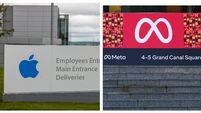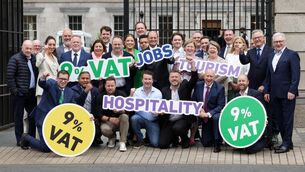If the future of work is hybrid, then what is the right mix?

The future of work is changing and there is considerable hype around the topic. However, what are the real issues?
Pre-Covid, the focus was on digitalisation and artificial intelligence disrupting jobs. During the pandemic, the focus has shifted to virtual working in order to maintain businesses.
With an end to lockdowns in sight, companies are changing their focus from maintaining operations to generating new growth.
This shift from survival back to growth will be crucial, as your business has the chance to not only survive, but also change the rules of the game. Now is a once in a generation opportunity to look at how your business innovates.
Innovation is synonymous with new technology, smartphones and biotechnology vaccines, based on intensive but behind-the-scenes R&D activity. However, in every industry the most progressive companies put innovation centre stage. In these companies, every function has a role to play in innovation.
For example, marketing needs to promote new products and services, finance must fund innovative growth, and IT has to enable digital business models. In addition, HR should decide on the organisational design that will foster innovation.
The future of office work is hybrid. The overnight adoption of virtual work has highlighted many advantages. Analysis of billions of digital exchanges and umpteen surveys shows that employees are happier, have less of a commute, have increased productivity, and a potential to access global talent.

The disadvantages are blurred work-life boundaries, stress and the reinforcement of functional silos, the very opposite of what is required to innovate. The big assumption is that a hybrid work approach can mix the best of ‘at-office work’ for, say, more complex and social activities such as innovation, and ‘at-home work’ for, say, thinking, planning and execution of tasks.
For sure, there are strong employer and employee preferences in different industries and life circumstances. We should learn from other companies, but what works for Goldman Sachs or Google will only frustrate everyone if it is shoehorned into your business.
While surveys provide a general view, they typically miss the actual thoughts and feelings of your employees which drive performance.
Bríd Seymour, Director of HR at Laya Healthcare said: “We’ve learned so much as everyone successfully worked off-site. We safeguarded our collaborative culture by varying team engagement through tailored communications, education and ideation sessions. These rich insights inform our hybrid roadmap”.
There are three key principles that HR, along with the full senior team, should follow to design a winning hybrid organisation.
With the re-opening, the temptation is to put 100% effort into current operations and earn now. The best companies, however, also focus on the future. By scanning the external context, for example customer needs and the competitors emerging from the pandemic, you can formulate alternative propositions and business models and candidly assess your own business model, including the talent and capabilities needed to profit in a way that is durable.
As psychologists and behavioural economists have proven, for new and vague practices, such as hybrid working, people rarely share their deeper thoughts and feelings, which ultimately drives their behaviour. A set of techniques that is called ‘hidden needs analysis’ can surface people’s deeper priority needs when it comes to their future and work. The use of these techniques must be framed to find win-win solutions in an adult way. This will avoid window dressing policies that people see through and then resist or circumvent.
Do not try to perfectly map it all out and implement in one go. This takes too long and risks becoming an implement at all costs, even when consistent issues arise. People like certainty but remember most have endured a newfound level of uncertainty. Employees will positively engage with any leadership led and inclusive approach to design a hybrid organisation that strengthens the business and how they perform.
Jim O’Brien is HR director for Aramark Northern Europe and is leading a review of their future work organisation. He reflected on the “necessity to look at the nature of each team and each role rather than a one size fits all approach.
Blanket policies of three days here and two days there are likely to prove foolhardy. What works for data analytics to make strategic decisions for innovative growth is not the same for optimising call centres”.
There is a lot of hype about the future of hybrid work. The above principles will help leaders design an innovative organisation that achieves the right mix of ‘at-work’ and ‘at-home’ working, meeting both employee needs and an organisation’s drive for growth. Yes, people want to return to normal. However, they also want things to be better. So, they are open to change. Progressive, innovative companies will provide the right mix: Will yours?










